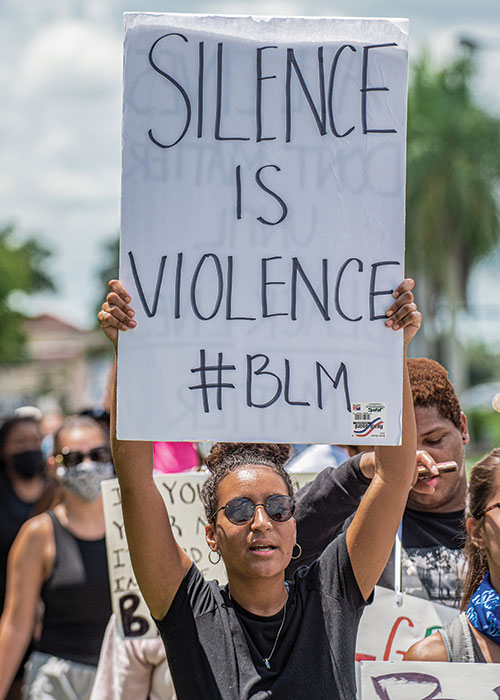
The pain and outrage ignited earlier this year by the deaths of George Floyd, Breonna Taylor and Ahmaud Arbery resonated far beyond Minneapolis, Louisville and Brunswick, Georgia. They even touched the usually tranquil Florida Gulf Coast University campus.
The Black Lives Matter movement energized a multiracial group of FGCU students who, like people across the nation, felt motivated to make their voices heard. On June 11, they marched from Miromar Outlets to the campus holding signs bearing messages such as “Respect existence or expect resistance.”
Cedric Dunham, a senior integrated studies major, Student Government director of student opportunity and president of the FGCU chapter of National Pan-Hellenic Council, was among those inspired to march and present a list of demands to the university’s administration on that steamy, summer day.
“Across the country, these types of things are still happening,” Dunham said in explaining why the students spoke out. “In our community things were happening. People are being discriminated against. We needed to address it with the school. We don’t want to be on a campus where we feel unsafe or don’t feel valued.”
He said one of the primary issues was “we feel like minorities – specifically Black people – aren’t celebrated. We don’t feel valued. The entire campus observes PRIDE Week and Hispanic History Month, but there’s never anything special for Black History Month. This year, on the 57th anniversary of MLK’s March on Washington, we rang the bells (on the Cohen Student Union).”
One month after the demonstration, FGCU President Mike Martin issued the following statement in an email to the university community:
“A fundamental value of FGCU is an unambiguous commitment to diversity, equity and inclusion and a firm resolve to address racism, bigotry and intolerance on our campus and beyond. Recent events across the nation have reminded us yet again that we must exhibit our values through action.”
He outlined ways in which the university would work to improve its efforts at equity, diversity and inclusion. Chief among those was the creation of the Center for Critical Race and Ethnic Studies, which would study issues of race, racial discrimination, bias and inequality under the leadership of Ted Thornhill, an associate professor of sociology.
Martin, an NAACP member for 40 years, said that work toward improved diversity and inclusion isn’t new at FGCU.
“We’ve been at this for quite a while,” he said, “although maybe it’s not as obvious
as it should be. Precious (Gunter, director of Equity & Compliance and Title IX coordinator) has been carrying out training on implicit racism and inclusion. We’ve had a very controversial, but appropriate, course on white racism taught by Ted Thornhill.”
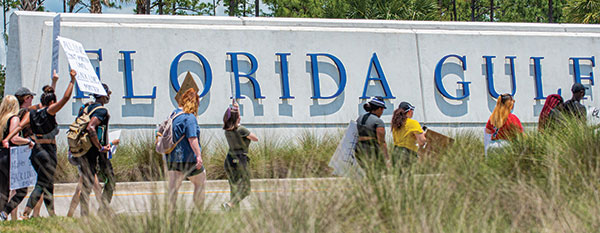
He added that too often we rely on people like Gunter and Thornhill to handle such problems, but, he added, “the overrepresented majority of the world is responsible to fix this and hold everybody accountable. It comes down on old white guys like me to take some responsibility and make things happen.” What follows is a look at some of the steps being taken to expand inclusiveness and diversity on campus.
INCREASING FACULTY/ STAFF OF COLOR
Minorities make up about 21 percent of the faculty and staff and about 34 percent of students. There’s broad consensus FGCU needs to attract more staff and faculty of color.
“Sometimes you feel more comfortable going to someone who looks like you, you relate better,” Dunham said. “We need more minority psychologists. Not everybody understands your internal struggle if they don’t have the same background as you.”
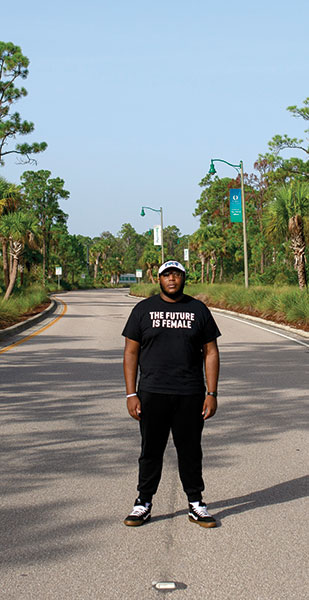
One Black therapist has been hired and the university is seeking to hire another.
The Black Faculty and Staff Association held its official launch in September. Its aim is to influence university policies while enhancing the welfare and improving the experience of Black members of FGCU. Christopher Blakely, the interim assistant vice president of campus life, dean of students and director of Multicultural & Leadership Development, added association president to his roles.
He’s looking forward to advancing diversity on campus. One way he hopes to do that is by teaming up with Thornhill.
“Ted and I have talked about collaboration,” Blakely said, “guiding students for more research, having an anti- racism conference, a speaker series and research that will help move our purpose forward to being more socially just and inclusive.”
Provost Jim Llorens and Assistant Provost Tony Barringer have been exploring ways to attract faculty of color for some time. The student demonstration simply reinforced their resolve.
Previously serving as chancellor at Southern University and A&M College in Baton Rouge, a historically Black university with a student body that was 90 percent to 95 percent African American, Llorens is convinced diversity is critically important.
“We recognized at Southern that diversity adds to the overall experience, to the knowledge and ability of students to understand the world we live in, the makeup of the world and the need to understand all people,” he said. “We made a conscious effort to expand our recruitment efforts and reach out to those communities underrepresented at Southern.”
Barringer said it takes a multifaceted approach to attract faculty of color.
“Once you get individuals here, you have to make them want to stay,” he said. “Make sure the (recruitment) ads are inviting, that they get the feeling that you are committed to diversity. Search committees need to be trained properly. We need to move away from traditional searches and do more talent acquisition – identify someone in our areas of specialty. There are waivers we can use to make it happen.”
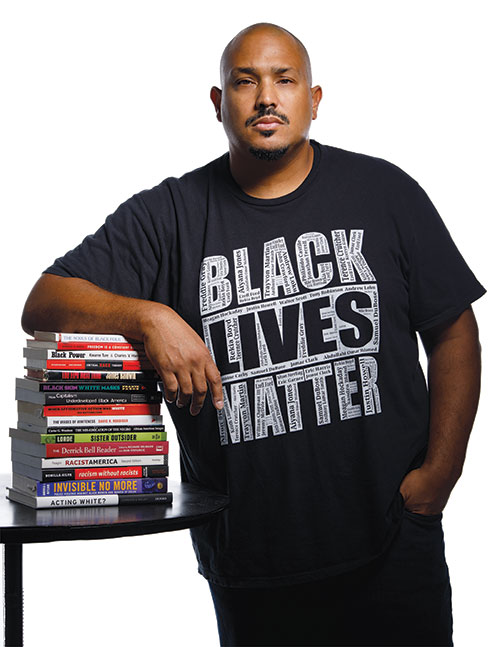
CENTER FOR CRITICAL RACE AND ETHNIC STUDIES
The new Center for Critical Race and Ethnic Studies will signal that FGCU is serious about diversity, equity and inclusion as well.
Thornhill had been thinking about creating it for a while but the pandemic delayed his plans. The deaths of Floyd, Taylor and Arbery and the resulting demonstrations around the country, including those in Southwest Florida, brought new urgency. Then he watched the students march.
“They spoke about their grievances, their experiences, sadness and frustration,” he said. “It was raw and powerful and painful. Afterwards there was no mistake that the students were demanding FGCU become an institution that more closely embodied its commitment to diversity, equity and inclusion.”

“It’s not unique to FGCU,” he said. “Nearly all institutions of higher education have some degree of separation between their professed values and how they operate.” Martin and Llorens quickly signed on.
“We readily agreed that the center would be an excellent addition to the academic structure of the university and our ability to address race and ethnic issues from a research standpoint,” Llorens said. “Dr. Thornhill, in a relatively short time period, has established a national and worldwide reputation with his research and through the center and its FGCU affiliate faculty, that research can be expanded.”
Thornhill envisions the center and its faculty affiliates – he’s named 9 so far – will be involved in research and other initiatives that deal with “racism and antiracism, power, identity, marginalization, culture and immigration,” he said.
The center, on the fourth floor of the Wilson G. Bradshaw Library, is still in the formative stages, but he envisions roles for students and the community.
INCREASING CONSCIOUSNESS
Precious Gunter’s job is to ensure that discrimination, harassment and bias have no place on campus, although, she said, “it’s everyone’s job.” Her office runs a certificate program for inclusion and diversity. Faculty, staff and students earn certificates by taking six or more courses on topics such as bias, uncovering racism, microaggression, environmental racism, voter suppression, dating and domestic violence and gender issues.
Gunter said there were 456 graduates of the program last year, the program’s fifth year, and 124 events are planned for this year, despite COVID-19.
She hopes heightened sensitivity to these issues is building throughout the university. “We have to make sure we are living up to it,” she said. “Are supervisors holding employees accountable during their annual evaluations?”
There are efforts underway to weave it more broadly into the curriculum and she hopes the new Center for Critical Race and Ethnic Studies will help raise the level of awareness and understanding as well.
“Sometimes people feel it’s being shoved down their throats, but it’s the right thing to do,” she said.
 ELSEWHERE AROUND CAMPUS
ELSEWHERE AROUND CAMPUS
ATHLETICS: In a division with 260 student-athletes from 32 counties and about as many states, there are many differences in language and culture. Athletics Director Ken Kavanagh appointed Jeremy Boreland to the post of FGCU athletics chief diversity & inclusion officer in addition to his job as assistant athletics director for business development.
“Jeremy has done a phenomenal job in taking a leadership role for us focusing on diversity and inclusion initiatives,” Kavanagh said. He added that Boreland has helped forge strong relationships among Athletics staff and the student-athletes and hopes it will have long-lasting positive effects.
Coaches and assistant coaches of color have held town hall meetings with student-athletes that led to an initiative called Eagles Against Injustice. The group has come up with a T-shirt featuring the Eagles Against Injustice logo and a call for social justice on the back. The $10 sales price will go toward The Sustaining Flight Fund, which benefits student-athletes by offsetting revenue lost from the impact of the COVID-19 pandemic.
STUDENT GOVERNMENT: Following the student demonstration, Student Government formed a Minority Outreach Committee, composed of members from all three branches of the government, and held a lengthy meeting at which students voiced their views on diversity and inclusion.
“It was one of our longest meetings,” said Danarria Stone, a junior economics major and Senate pro-tempore, “but it was good because the students came to say how they were feeling. It was not all negative but they talked about what they wanted to see – more Black faculty and staff on campus, more representation on campus.”
She said committee members met with various departments on campus and have been encouraged by the mostly positive responses they’ve received. “I’m feeling optimistic and hopeful,” she said. “The most important thing is that the conversation has been started.”
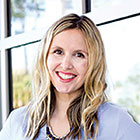
ALUMNI: After determining that many alumni of color don’t feel part of their alma mater, Kim Wallace, director of Alumni Relations, enlisted the help of former Student Government president and current Alumni Association board member Jalisa White to help create a multicultural alumni network.
“I think it will engage an audience who never felt engaged,” Wallace said. “I want all of our alums to feel a part of their university.”
From his perspective as a student, Dunham sees progress. “The school’s doing an OK job so far addressing things,” he says. He adds that he looks for continued improvement.
All of these efforts will take time, Llorens said. “It doesn’t happen overnight. It has to be built into the culture of the university. We have a strong core of faculty members, department chairs and deans who are committed to this.”
Although Llorens retires at the end of the year, he is optimistic that people and programs are now in place to make that happen.
“Once it’s understood that it’s critical for the university, I’m very confident that there are individuals that are going to be here to see this as an integral part of the university going forward,” he said.
Barringer agreed. “It’s going to take all hands on deck in order for this to work.”